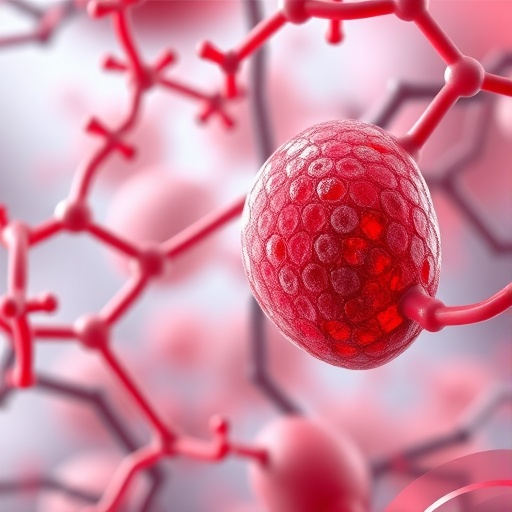Emerging research is shedding new light on the intricate mechanisms underpinning hepatic fibrosis, particularly through the lens of post-translational modifications (PTMs). A critical study published in the journal Journal of Translational Medicine by Bai, Liu, Li, and colleagues reveals the profound implications of these molecular alterations on the progression of liver diseases. This work delves deeply into the pathogenic roles that PTMs play and the therapeutic potentials they hold, inviting a recalibration of our understanding of liver pathology and treatment modalities.
Hepatic fibrosis is a condition marked by excessive accumulation of extracellular matrix components, leading to the scarring of liver tissue and the eventual onset of cirrhosis and liver failure. The onset of fibrosis is often linked to persistent liver injuries, which can be viral, toxic, or autoimmune in nature. Recent investigations have demonstrated that post-translational modifications serve as critical regulatory mechanisms in various cellular processes related to fibrosis. This has prompted researchers to explore the potential of targeting these modifications for therapeutic purposes.
At the core of this study lies the need to understand how PTMs such as phosphorylation, methylation, ubiquitination, and acetylation modulate protein functions within hepatic cells. For instance, the phosphorylation of certain signaling proteins can lead to enhanced fibrogenic responses, a hallmark of advanced hepatic fibrosis. Meanwhile, ubiquitination can serve as a tag for proteasomal degradation, further influencing the cellular environment and the progressive nature of liver disease.
The research team conducted extensive experiments that elucidated the roles of specific enzymes responsible for these modifications. They demonstrated that the upregulation of certain kinases that facilitate phosphorylation was significantly correlated with markers of fibrogenesis. This finding presents an intriguing possibility: by inhibiting these kinases, it might be feasible to halt or even reverse the progression of fibrosis, presenting a novel strategy for therapeutic intervention.
Particularly noteworthy is the role of matrix metalloproteinases (MMPs) in liver fibrogenesis. These enzymes, vital for extracellular matrix remodeling, are heavily regulated by post-translational modifications. The study revealed that changes in the expression and activity of MMPs could be directly linked to the patterns of PTMs occurring in liver cells during fibrotic progression. Targeting these pathways may provide new avenues for therapy, as manipulating the activity of these enzymes could slow or reverse the fibrotic process.
Moreover, the research delves into the therapeutic implications of understanding PTMs in the context of fibrosis. By identifying key targets among the proteins modified in hepatic cells, researchers aim to design small molecules or biologics that can modulate these changes effectively. The ultimate goal is to develop treatments that are not only effective but also specific to the pathways acting within the fibrotic liver, thus minimizing side effects.
The implications of this research extend beyond just liver fibrosis; the methodologies and insights garnered from studying PTMs may be translatable to other fibrotic diseases in the body. Conditions such as pulmonary fibrosis, myocardial fibrosis, and even systemic sclerosis share common pathophysiological features with hepatic fibrosis. Therefore, the knowledge gleaned from this study could inspire a broader approach to treating various fibrotic manifestations.
With hepatic fibrosis being such a significant global health challenge, this research holds promise for millions affected by liver disease. It emphasizes the urgency of continued exploration in the realm of PTMs and their influence on cellular dynamics. The hope is that by translating these findings into clinical practice, clinicians will have a new arsenal of strategies to combat the growing prevalence of liver diseases, ultimately shifting the paradigm of how we approach hepatic fibrosis management.
The potential applications of this research are vast, from enhancing existing treatments for chronic liver conditions to potentially developing new medications that directly target fibrogenic pathways. This proactive approach to treating liver fibrosis signifies a pivotal shift from merely managing symptoms to averting the disease altogether. Researchers are evermore focused on the molecular underpinnings of fibrosis to provide solutions that could fundamentally alter patient outcomes.
In conclusion, the insights provided by Bai et al. offer a compelling glimpse into the future of hepatic fibrosis research. With the elucidation of post-translational modifications as critical players in liver disease, this study is a call to action for the scientific community: to harness these insights in crafting more effective therapeutic modalities. Continued investigation into these pathways will undoubtedly unveil novel targets, potentially leading to major breakthroughs in the treatment of liver diseases. As science pushes forward, the intersection of molecular biology and clinical translation will be paramount for revolutionizing how we treat and ultimately prevent liver fibrosis.
The need for innovative therapies in the face of rising liver disease incidence cannot be overstated. This study exemplifies the fusion of intricate biochemistry with practical health solutions, paving the way for a new era in hepatology. As we await further advancements, one thing remains clear: understanding the underlying mechanics of liver fibrosis through the lens of post-translational modifications could set the stage for significant progress in patient care.
Subject of Research:
Post-translational modifications in hepatic fibrosis
Article Title:
Mechanistic insights into post-translational modifications in hepatic fibrosis: pathogenic roles and therapeutic potentials.
Article References:
Bai, X., Liu, Z., Li, X. et al. Mechanistic insights into post-translational modifications in hepatic fibrosis: pathogenic roles and therapeutic potentials.
J Transl Med 23, 1036 (2025). https://doi.org/10.1186/s12967-025-07037-6
Image Credits:
AI Generated
DOI:
10.1186/s12967-025-07037-6
Keywords:
post-translational modifications, hepatic fibrosis, therapeutic targets, liver disease, fibrosis progression




